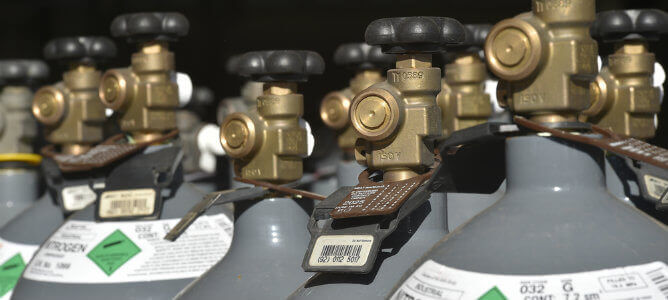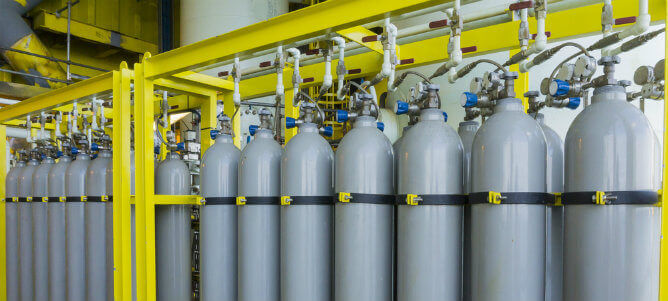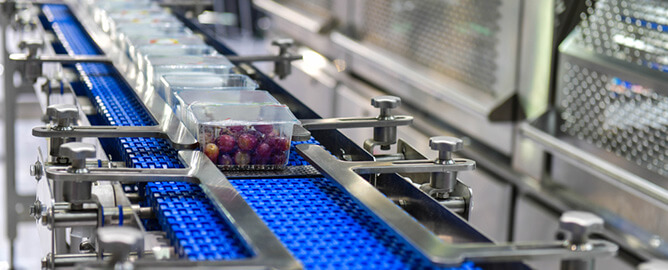
Industrial Grade Nitrogen Classification & Purity Levels
Due to its inert nature, gaseous nitrogen can be used in various purging, blanketing, and flushing operations. Depending on the process involved, different grades of nitrogen purity are needed to fulfill unique manufacturing needs.
This article discusses the categories of nitrogen gas for industrial use and their appropriateness for different manufacturing processes.
What is Nitrogen Purity?
Nitrogen purity refers to the proportion of nitrogen gas present in a sample taken from its stream compared to impurities. Nitrogen can be categorized as high purity or low purity depending on the ratio of pure gas to contaminants like oxygen, water vapor, carbon monoxide, and carbon dioxide.
This categorization based on nitrogen concentration plays a key role in determining the suitability of nitrogen for any industrial process.
High-Purity vs. Low-Purity Nitrogen
The purity of a sample of nitrogen is determined by the percentage/concentration of pure nitrogen in it. For gas to be classified as high purity, it must possess at least 99.998 percent nitrogen while lower purity nitrogen gas usually contains a higher proportion of impurities.
High-Purity Nitrogen
Gaseous nitrogen with concentrations above 99.998% is considered a high-purity fraction. Different manufacturers can grade High nitrogen purity in different ways; however, it is mainly considered a “zero-grade” fraction. Zero-grade nitrogen purity is categorized as such because it contains less than 0.5 parts per million of hydrocarbon impurities.
Other key characteristics of high-purity nitrogen are:
- Oxygen concentration ≤ 0.5 parts per million
- Carbon monoxide/carbon dioxide no more than 1.0 parts per million
- Water not greater than 3 parts per million
Low-Purity Nitrogen
Nitrogen ranging between 90 to just under 99.9% is considered to be low-purity. Common low-purity nitrogen gas brands include:
- Zero
- Pre-purified
- Oxygen-free
- Extra dry
- Industrial
How to Check the Purity of Nitrogen Gas
Nitrogen gas manufacturers name their products differently; no standardized naming conventions exist. As a result, a low-purity gas from one producer might be mistaken for a high-purity gas by another based on its name alone. The only definitive way to determine a gas rating is to check the manufacturer’s guide on their unique gas concentrations.

Nitrogen Gas Purity Classification
Classifying pure nitrogen is done with the grading system using digits within each minimum purity rating. The first digit of each grade refers to the number of “nines” present in it, while the second digit represents the number following the last nine. For example, grade N3.0 is equal to 99.9% nitrogen purity and is a pure-grade gas purity classification (no second digit attachment).
Pure grade nitrogen classifications include N2.0, N3.0, N4.0, N5.0, N6.0, and N7.0.
What is Ultra High Purity (UHP) Nitrogen Gas?
Ultra-high nitrogen purity levels refer to a nitrogen concentration of 99.999% with negligible impurities. UHP nitrogen specifications are strict, with variations rendering the classification invalid.
The oxygen content of UHP gas can be no greater than 2 parts per million by volume (ppmv), total hydrocarbons cannot exceed 0.5 parts per million by volume, and moisture no greater than 1 part per million by volume). UHP nitrogen is typically used in scientific applications.
What is Oxygen-Free Nitrogen (OFN)?
Oxygen-free nitrogen is defined as gaseous nitrogen containing no more than 0.5 parts per million of oxygen. OFN gas is typically maintained at 99.998% nitrogen purity. This grade of nitrogen gas is useful in scientific research and calibration processes where oxygen impurities might alter outcomes or cause incorrect results.
Nitrogen Purity Grades by Industry
As mentioned above, the concentration of nitrogen required in different industrial processes varies greatly. The key consideration in choosing a grade of nitrogen is the effect of impurities on the selected application. Sensitivity to moisture, oxygen, and other contaminants are critical. Certain industries also require nitrogen with specific properties, such as an inert atmosphere for chemical stability or controlled chemical reactions.
Pharmaceutical-Grade Nitrogen
Pharmaceutical manufacturing processes require high nitrogen purity levels to prevent contamination and alteration of their final products. Many drugs require high-grade nitrogen with a purity between 97-99.99%. This high to ultra-high-purity nitrogen is used for nitrogen blanketing in storage tanks, receptacles, and other equipment used in drug manufacturing.
High-purity nitrogen also plays a role in drug packaging to help retain freshness and prevent the breakdown of amino acids and other active ingredients. Some pharmaceutical applications use pressure swing adsorption (PSA) technology to produce consistent purity levels.
O&G-Grade Nitrogen
Gaseous nitrogen with purity levels ranging from 95-99% is useful in the oil and gas industry to reduce the risk of fires and explosions in associated processes. Chemical storage tank inerting and pipeline purging with nitrogen help minimize the risk of sudden combustion of their contents.
Pipeline maintenance services frequently use pressurized nitrogen produced through PSA or cryogenic methods for pipeline cleaning and pipeline decommissioning. Additionally, nitrogen’s boiling point makes it effective in liquefied applications for deep-well drilling and cryogenic fracturing.
Food-Grade Nitrogen/Beverage Grade Nitrogen
Nitrogen is commonly used in different steps of food and beverage production, packaging, and storage. Elemental nitrogen in food packaging and processing preserves the shelf life of processed food and drinks by eliminating food oxidants, preserving flavor, and preventing rancidity. Food-grade nitrogen requirements typically fall between 98-99.5% purity.
Liquid nitrogen is also used for rapid freezing of perishable goods, while controlled amounts of nitric oxide and nitrous oxide may be monitored in modified atmosphere packaging.

Industrial Nitrogen Grade Purity
Understanding the nitrogen grade requirements for each application is essential for selecting the appropriate nitrogen supply source and ensuring optimal performance and reliability. Some industrial applications and their nitrogen-grade requirements are outlined below.
- Electronic & Semiconductor Manufacturing Grade Nitrogen – The typical nitrogen grade requirements in electronics and semiconductor production are usually at least 99.99-99.999%. Some processes, like parts cleaning and adhesive blanketing, utilize lower concentrations of nitrogen (95-99.5%).
- Plastics Manufacturing Grade Nitrogen – Nitrogen grade requirements for plastics synthesis is 95-98% for injection molding processes, 99.5% for gas-assist injection molding, and 98-99.5% for blown film extrusion.
- Metalworking Grade Nitrogen – Metalworking grade nitrogen varies widely from 95-99% for heat treatment to 99-99.999% for laser cutting processes.
- Power Generation Grade Nitrogen – Power generation processes like gas seal purging, boiler layup, natural gas line purging, and demineralized water blanketing require nitrogen gas with purities between 95-99.6%.
NiGen’s Onsite Nitrogen Generators Cover Most Applications
At NiGen, we specialize in supplying and maintaining efficient onsite nitrogen generators tailored to meet the diverse needs of various industrial manufacturing processes. Our extensive range of products and services ensures that all nitrogen requirements are fulfilled at every stage of your production cycle.

